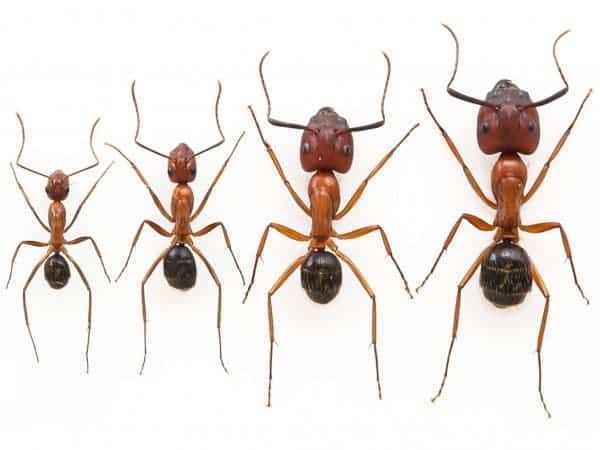Florida worker ants doubled in size after scientists performed chemical changes to their DNA. The ants were not genetically modified per se, not in the conventional sense that implies altering their code. Essentially, the ants were exposed to a chemical, environmental changes that mimicked those found in their colony and which lead to ants of various sizes and behaviors despite sharing the same genes – a perfect example of epigenetics.
Shaping life

Epigenetics is the new discipline that is revolutionizing biology. Whenever two genetically identical individuals are nonidentical in some way we can measure, this is called epigenetics. When a change in environment has biological consequences that last long after the event itself has vanished into distant memory, we are seeing an epigenetic effect in action. In other words, who we are today (personality aside) can’t be described by genetic code alone – there’s also something else at play. This is why scientists often cite two entities that are genetically identical but nonetheless different as products of epigenetics.
The most famous illustration of epigenetics is the unfortunate Dutch Hunger Winter, which lasted from the start of November 1944 to the late spring of 1945. During this time, West Holland was still under German control. A German blockade resulted in a catastrophic drop in the availability of food to the Dutch population. At one point the population was trying to survive on only about 30 percent of the normal daily calorie intake. They ate anything they could get their hands on; grass, tulip bulbs, book covers. By the time Holland was liberated in May 1945, some 20,000 people had died of starvation. Epidemiologists have been able to follow the long-term effects of the famine, but what they found completely blew their minds.
Mothers well fed around the time of conception, but malnourished only for the last few months of pregnancy gave birth to babies to smaller babies, on average. On the other hand, mothers who were malnourished for the first three months of pregnancy, but where then well fed (the blockade was lifted) were likely to birth normal-size babies. The fetus “caught up” in body weigh, sort of speak. That’s pretty straightforward so far, but in the course of the decades doctors have been following the babies they found those who were born small stayed small all their lives, with lower obesity rates than the general population, despite having access to as much food as they wanted. That’s not all. The children of the mothers who had been malnourished only early in their pregnancies had higher obesity rates than normal. Then, some of the same effects were observed, to a lesser degree, in the children of those who had been born in those troubled time, that is to say, the grandchildren of the malnourished mothers.
Scientists have later understood that these are epigenetic changes, and we’re only recently truly coming to understand how these work. This latest research that studied epigenetic changes in Florida carpenter ants (Camponotus floridanus) is a prime example.
Ant colonies are fantastic social networks, where the division of labor is essential to its survival and greater good. Queens pump the eggs and workers perform the chores and tasks essential to the ant community. The workers themselves can be either minor or major. The minor workers can be less than 6 mm long. They rear the young and forage for food. The major workers are twice as long and act as guards, protecting the colony. However, queens and workers are all highly similar genetically, but they’re extremely different in size and behavior.
Again, genetic code alone wasn’t enough to explain what was happening here and a team at McGill University in Montreal suspected DNA methylation was at play – the addition of chemicals to DNA. The idea is that the environmental factors stem the discrepancies between the worker ants – some will receive more or less food, as well as different care.
To test this idea, Sebastian Alvarado, lead author on the paper, added chemicals which promote or curb methylation throughout the genome. Increase methylation led to more minor ants, while reduced methylation produced more major ants, as reported in Nature.
“We have provided a biological mechanism that can explain that difference” between major and minor workers, Alvarado says for Science.
Eventually, the researchers nailed some of the genes whose activity promotes growth. One of these is was the epidermal growth factor receptor (EGFR). When the gene was blocked, larger workers were produced. But what’s really bugging the researchers is that it’s not only about growth – it’s also a case of behaviour. Minor workers are care givers, while major workers are aggressive warriors. “It would be interesting to see if a change in DNA methylation also changes their behavior,” Alvarado says. This is what they’re working on now.



